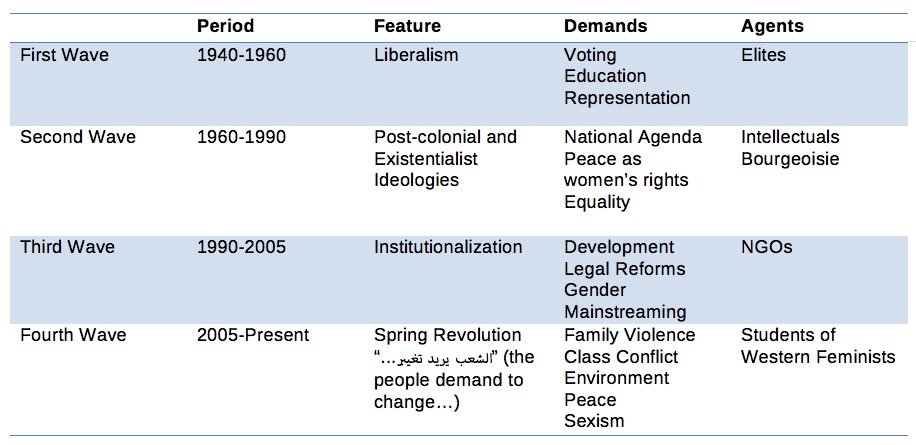Feminism is a social and political movement that advocates for women’s rights on the grounds of equality between genders. Feminist movements have evolved over time, and each wave has built on the successes and challenges of the previous wave. This article will explore the four waves of feminism, their significance, and how they have shaped the modern world.

First Wave of Feminism (Late 19th to Early 20th Century)
The first wave of feminism emerged in the late 19th century and continued through the early 20th century. This movement was focused on achieving basic legal rights for women, such as the right to vote, own property, and receive an education. Women in the first wave of feminism also fought for the right to work outside of the home and were instrumental in establishing the women’s suffrage movement.
Key Figures: The first wave of feminism was led by notable figures such as Susan B. Anthony, Elizabeth Cady Stanton, and Lucy Stone, who were pioneers in the women’s suffrage movement. These women formed organizations such as the National Woman Suffrage Association and the American Woman Suffrage Association to campaign for women’s right to vote.
Achievements: The first wave of feminism succeeded in securing the right to vote for women through the passage of the 19th Amendment to the U.S. Constitution in 1920. Women also made significant progress in gaining access to higher education and entering the workforce.
Significance: The first wave of feminism laid the groundwork for future feminist movements by establishing women’s suffrage as a central issue in the fight for gender equality. It also challenged traditional gender roles and paved the way for women to enter the workforce and pursue education.
Second Wave of Feminism (1960s-1980s)
The second wave of feminism emerged in the 1960s and continued through the 1980s. This movement was characterized by a focus on social and cultural issues, including reproductive rights, sexual liberation, and equal pay. Women in the second wave of feminism aimed to challenge and dismantle the social norms and expectations that restricted women’s choices and opportunities.
Key Figures: The second wave of feminism was led by influential figures such as Betty Friedan, Gloria Steinem, and bell hooks. These women founded organizations such as the National Organization for Women (NOW) and Ms. Magazine, which sought to promote feminist ideas and activism.
Achievements: The second wave of feminism achieved significant successes, including the legalization of abortion and the establishment of Title IX, which prohibits sex discrimination in education. Women also made progress in entering male-dominated fields and gained greater visibility in politics and media.
Significance: The second wave of feminism was instrumental in challenging gender stereotypes and promoting women’s empowerment. It helped to create a cultural shift towards greater equality and expanded the feminist movement to include women of color, lesbians, and working-class women.
Third Wave of Feminism (1990s-2000s)
The third wave of feminism emerged in the 1990s and continued into the early 2000s. This movement was characterized by a focus on intersectionality and diversity, with an emphasis on inclusivity and recognizing the experiences of marginalized groups. Women in the third wave of feminism also sought to challenge the notion that gender equality had been achieved and addressed ongoing issues such as sexual harassment and violence against women.

Pay Someone to Do My Homework for Me
Key Figures: The third wave of feminism was led by figures such as Rebecca Walker, who coined the term “third wave,” and Kimberlé Crenshaw, who introduced the concept of intersectionality. This wave also saw the emergence of a new generation of feminist voices, such as Jessica Valenti and Chimamanda Ngozi Adichie.
Achievements: The third wave of feminism achieved notable successes, including the passage of the Violence Against Women Act in 1994 and the emergence of online feminist communities and activism. Women also made strides in politics, with the election of the first woman of color to the U.S. Senate in 1992 and the first woman to serve as Speaker of the House in 2007.
Significance: The third wave of feminism helped to expand the feminist movement to include a wider range of experiences and identities. It also focused on the ongoing challenges facing women, particularly those from marginalized groups, and promoted the use of intersectionality as a framework for understanding and addressing these issues.
Fourth Wave of Feminism (2010s-Present)
The fourth wave of feminism emerged in the 2010s and is characterized by a focus on digital activism, social media, and the use of technology to promote feminist ideas and causes. This wave of feminism also addresses new and emerging issues facing women, such as the impact of technology on gender and the continued fight for reproductive rights.
Key Figures: The fourth wave of feminism is led by a diverse range of voices and activists, including Tarana Burke, who founded the #MeToo movement, and Malala Yousafzai, who advocates for girls’ education and empowerment. Social media has also played a key role in amplifying feminist voices and mobilizing activism.
Achievements: The fourth wave of feminism has achieved significant successes, including the exposure of sexual harassment and assault through the #MeToo movement and the ongoing fight for reproductive rights in the face of restrictive legislation. Women have also made progress in politics, with record numbers of women elected to Congress in 2018.
Significance: The fourth wave of feminism is significant for its use of technology and social media to mobilize activism and amplify feminist voices. It also addresses new and emerging issues facing women and continues the fight for gender equality.
Conclusion
The four waves of feminism represent a continuum of progress and activism in the fight for gender equality. Each wave built on the successes and challenges of the previous wave, expanding the scope of the feminist movement and addressing new and emerging issues facing women. While there is still much work to be done to achieve true gender equality, the feminist movement has made significant strides over the past century, and the four waves of feminism have been instrumental in advancing the cause of women’s rights.
- How I Manage My Time – 10 Time Management Tips
- How to Remembering Everything You Read: Tips & Tricks
- Ethics in International Business – Bachelor’s in Business Administration
- The importance of ethics and ethical best-practices in Business Administration
- Role of Ethics in Public Administration Essay Sample
Find online help in writing essays, research papers, term papers, reports, movie reviews, annotated bibliographies, speeches/presentations, projects, presentations, dissertation services, theses, research proposals, essay editing, proofreading, Book reviews, article reviews, formatting, personal statements, admission essays, scholarship essays, application papers, among others.


 WRITE MY ESSAY NOW!
WRITE MY ESSAY NOW!